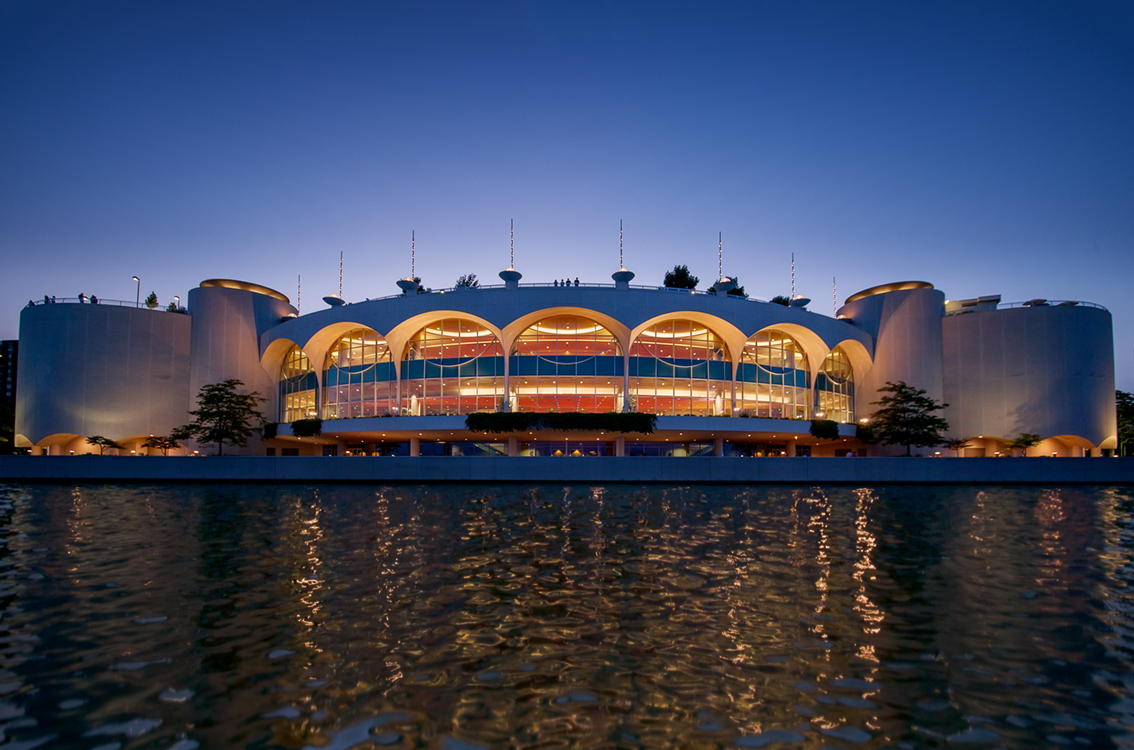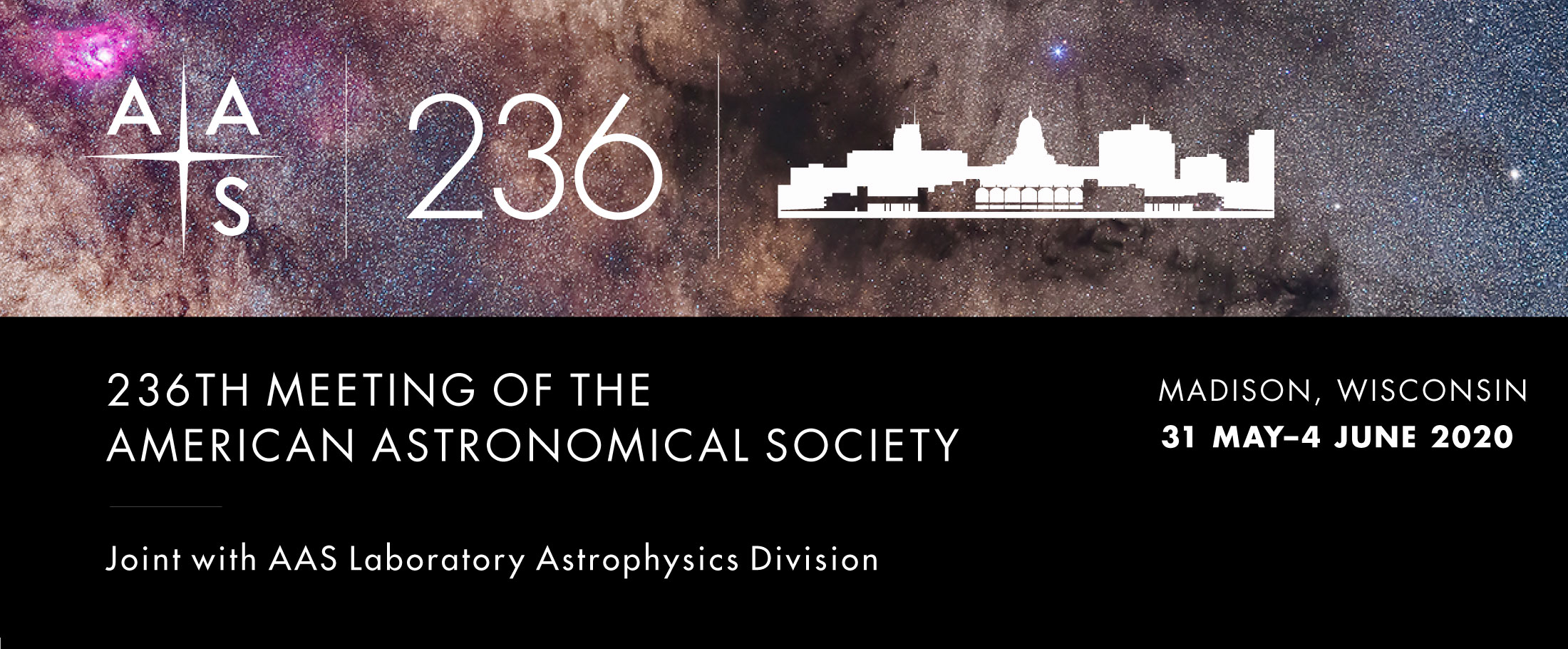AAS 236: Mad About Astronomy in “Mad City”

Richard Fienberg Running Hare Observatory
Before Hawai‘i, before Arizona, before California, there was...Wisconsin! At the end of the 19th century the world’s largest refracting telescope, with an objective lens 40 inches in diameter, was installed at Yerkes Observatory in Williams Bay. It was the brainchild of pioneering astronomer George Ellery Hale, founder of the Astrophysical Journal, co-founder of the AAS, discoverer of magnetic fields in sunspots, and driving force behind the 60- and 100-inch reflectors atop Mount Wilson and the 200-inch reflector on Palomar Mountain.
While astronomers don’t do research at Yerkes anymore, Wisconsin still has plenty of cosmic connections, including an active astronomy department at the University of Wisconsin in Madison and the editorial offices of Astronomy magazine in Waukesha. So it should come as no surprise that the AAS is heading to the Badger State for its 236th meeting, to be held jointly with the AAS Laboratory Astrophysics Division (LAD) from 31 May to 4 June 2020 at the Monona Terrace Community and Convention Center, 1 John Nolen Dr., Madison, WI 53703. Originally designed by Frank Lloyd Wright, the venue is located on the shore of beautiful Lake Monona just two blocks from the Wisconsin State Capitol in downtown Madison. Meeting hashtag: #aas236.

Registration, Abstracts, Lodging & Grants
Registration and abstract submission for AAS 236 are now open! Register by the early deadline of 10 March for the best rates; prices go up 12% on 11 March, then another 13% on 7 April. The sooner you register, the more you save.
March 10th is also the regular abstract deadline. For this meeting we will accept abstracts only for oral presentations (video tutorial) and iPoster digital posters (video tutorial); there will be no traditional printed posters in Madison. If you can’t meet the regular abstract deadline, you can submit a late abstract — for an iPoster, but not for a talk — by 1 April.
The AAS has reserved room blocks at discounted rates at three hotels: the Hilton Madison Monona Terrace, the Madison Concourse Hotel and Governor’s Club, and the Park Hotel. By staying at our official conference hotels, you help keep AAS meeting costs down for everyone. The deadline for reserving rooms at the AAS group rates is 5 May.
Members of historically underrepresented groups, such as scientists at small colleges, minorities, non-traditional students, and veterans, are welcome to apply for FAMOUS (Funds for Astronomical Meetings: Outreach to Underrepresented Scientists) travel grants of up to $1,000 to present their research at the Madison meeting. Applications are due by 15 March.
Early career scientists, those at small institutions with limited funding, and other AAS members affected by the financial burden of child or adult dependent care may apply for Child/Dependent Care Grants for use either at the meeting location or at home. Applications are due by 1 May.

Prize & Invited Talks
With support from the Kavli Foundation, the AAS Vice-Presidents name a special invited lecturer to kick off each semiannual AAS meeting with a presentation on recent research of great importance. In Madison the Fred Kavli Plenary Lecture will be given by Lisa Kaltenegger (Cornell University), a world leader in the search for signs of life on exoplanets that could be detectable with ground- and space-based telescopes. The theme of LAD’s sessions is “Bridging Laboratory & Astrophysics,” and in a special LAD plenary talk Paola Caselli Max Planck Institute for Extraterrestrial Physics) will emphasize how astrochemistry and molecular spectroscopy inform our understanding of star and planet formation. Kazunari Shibata (Kyoto University), recipient of the AAS Solar Physics Division’s 2020 Hale Prize, will give a prize lecture about his work on solar flares and space weather.
The Madison meeting offers a rich assortment of other prize and invited talks by distinguished astronomers, including Roberta Humphreys (University of Minnesota) on the lives and deaths of massive stars, Elisabeth Mills (Brandeis University) on a journey to the galactic center, and Jo Dunkley (Princeton University) on ground- and space-based observations of the cosmic microwave background.
Last year’s recipient of the Annie Jump Cannon Award, Blakesley Burkhart (Rutgers University), will talk about her prize-winning work on magnetohydrodynamic turbulence in different astrophysical contexts. Jacqueline Faherty (American Museum of Natural History) will describe recent progress in understanding brown dwarfs, and Christina Tremonti (University of Wisconsin, Madison) will do the same for galaxy outflows.
Current policy issues of importance to our profession will be addressed in plenaries too. Dara Norman (NSF’s OIR Lab) will explore the themes of diversity, inclusion, and access in the astronomical community and beyond. James Lowenthal (Smith College) and Sandra Cruz-Pol (National Science Foundation) will consider the threats from satellite constellations to astronomy and the challenges of radio spectrum management.
Recent LAD awardees will present prize lectures in LAD sessions throughout the week, including Lucy Ziurys (University of Arizona), recipient of the 2019 Laboratory Astrophysics Prize; Sarah Hörst (Johns Hopkins University), winner of the 2020 Early Career Award; and Natalie Hell (Lawrence Livermore National Laboratory), honored with the 2020 Dissertation Prize. In addition we’ll hear from John Cowan (University of Oklahoma), who will give a LAD talk on behalf of James Truran (University of Chicago), who was awarded the 2020 Laboratory Astrophysics Prize but is unable to join us in Madison.
Special Sessions, Meetings-in-a-Meeting & Town Halls
In addition to daily LAD sessions and regular contributed oral and iPoster sessions, the Madison meeting will feature an assortment of topical Special Sessions and multi-session Meetings-in-a-Meeting. Among the former are “Astronomy from the Moon: A New Frontier for 21st Century Astrophysics,” “Diffuse X-Ray Emission from the Milky Way,” “Dual-Anonymous Peer Review for NASA Astrophysics Proposals,” “The Fermi Bubbles: Progress and Prospects,” and “The NASA-NSF Exoplanet Observational Research (NN-EXPLORE) Program at the WIYN Observatory.”
MiM sessions include “Supermassive Black Hole Studies with the LSST” (now the Vera C. Rubin Observatory), spanning Monday through Wednesday, and “The Interstellar Medium of Galaxies in the Era of Big Data,” with sessions daily Monday through Thursday.
There will also be several lunchtime Town Hall meetings on astronomy and public policy, where you can interact with representatives from NASA, the National Science Foundation, the Space Telescope Science Institute, and the Society’s own policy team.
A highlight of every AAS summer gathering is the Annual Members’ Meeting, which will be held Tuesday evening, 2 June. If we can’t attract you with presentations on the state of the Society by key staff members and elected leaders, perhaps we can entice you to attend with snacks and liquid refreshments!
Visit Madison
Located on an isthmus and lands surrounding four lakes, “Mad City” has historically been a center for progressive political activity, protests, and demonstrations. It features an extensive network of parks and bike trails that attract legions of outdoor enthusiasts. Named after President James Madison, Wisconsin’s capital and second largest city (after Milwaukee) is home to eight National Historic Landmarks, including one UNESCO World Heritage Site: the Herbert and Katherine Jacobs First House, designed in 1937 by Frank Lloyd Wright in his signature “Usonian” style.
According to Destination Madison, it’s easy to find free, fun things to do in town. Olbrich Botanical Gardens offers 16 acres of outdoor gardens and an ornate Thai pavilion, the only one of its kind outside Thailand. The gardens’ indoor space, Bolz Conservatory, is a 50-foot-tall glass pyramid filled with exotic plants, bright flowers, a rushing waterfall, and free-flying birds. The University of Wisconsin-Madison Arboretum features gardens; ecological communities including woodlands, savannas, prairies, and wetlands; and 20 miles of hiking and biking trails. And you’re never far from one of Madison’s lakes.
Interested in architecture? The Wisconsin State Capitol building is the only one in the country with a granite dome and is designated a National Historic Landmark. Home to the State Legislature, Supreme Court, and Office of the Governor, it also features ornate mosaics and marble. The Governor's Mansion, built in the Classical Revival style, sits on more than four acres along Lake Mendota. It has 16,000 square feet of living space, including 34 rooms, 13 bathrooms, seven bedrooms, and several fireplaces.
According to a recent article in the Washington Post, “Madison is like Sara Lee. Nobody doesn’t like Madison.” See you there!

